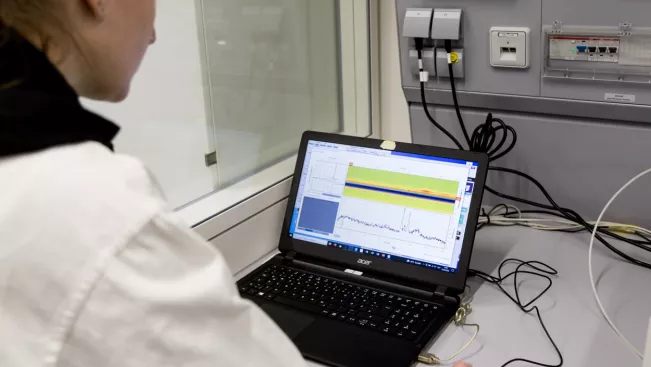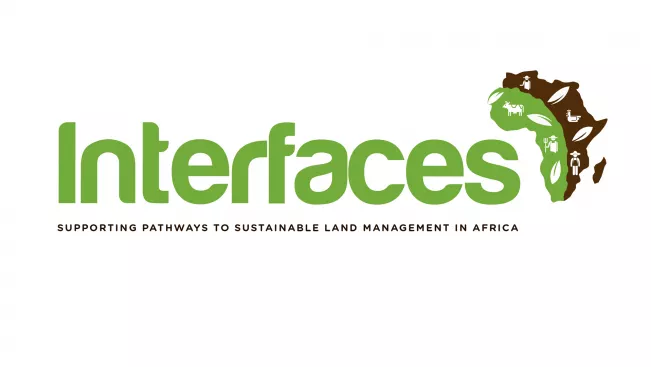Research at the university
Research Database: Projects
Forschungsprojekte (229)
The reTURN project partners are stepping up to revolutionize the transportation sector through sector coupling and to demonstrate a process for producing climate-friendly synthetic fuels at a viable cost.
Project management at the H-BRS
Prof. Dr Stefanie MeilingerThe continuously improving performance of UVC LEDs over the past few years offers new possibilities in the design and construction of UV photometers for the measurement of ozone. The aim is to develop an automated experimental setup to determine the long-term stability of the LED ozone sensor as well as methodology for monitoring.
Project management at the H-BRS
Prof. Dr Peter-Michael KaulThe occurrence of N-nitrosamines is an important public health issue. Due to their good water solubility, they enter the aquatic environment via industrial and municipal input pathways. For companies, they are a major problem due to their carcinogenic potential, diversity and versatile occurrence due to frequent formation in technical processes. The aim is to develop a sensitive, sufficiently selective, economical, and on-site analytical method with sample preparation that can be automated as much as possible.
Project management at the H-BRS
Prof. Dr Michaela WirtzN-nitrosamines, along with other pollutants, have become a cross-sectoral, persistent, and important health issue in various areas of occupational, environmental and product protection in recent years. They are among the organic nitrogen compounds with a high carcinogenic potential. The aim is to provide a new method with which, firstly, nitrosamines in air and, secondly, also in other matrices can be measured more sensitively than before with simultaneous robustness and result validity.
Project management at the H-BRS
Prof. Dr Michaela WirtzThe aim of ALBERO is to develop concepts and technologies for the safe integration of alternatively fuelled vehicles into RORO ferry services. Alternative propulsion systems such as electric vehicles and battery-powered cars as well as alternative fuels such as natural gas and hydrogen are to be considered. The project will develop technical, structural and organisational measures to enable safe transport and (for electric vehicles) safe charging during the journey.
Project management at the H-BRS
Prof. Dr Peter-Michael KaulArtificial intelligence methods can efficiently help us understand aftermath requirements, constraints, and decision-making processes at an early stage. Algorithms are typically used in late stages of engineering development projects. We want to reverse this and show engineers early on which types of solutions meet their requirements.
Project management at the H-BRS
Dr Alexander HaggIn this project, the Bonn-Rhein-Sieg University of Applied Sciences will analyse the availability of brewer's grains and the sustainability of procurement and processing. The design of a suitable electrochemical electrolysis cell will be carried out at Robert Gordon University.
Project management at the H-BRS
Prof. Dr Tanja Clees Prof. Dr Stefanie MeilingerLand management and the securing, use, control and governance of land-related natural resources is one of the key drivers for sustainable development in Africa. Sustainable land management should contribute to food security, adaptation of agriculture and forestry to climate change, nature and environmental protection, and be organized in a way that contributes to social justice. From October 2022, the German Federal Ministry of Education and Research (BMBF), together with INTERFACES, is supporting four regional research and development (R&D) projects that will contribute to this aim.
Project management at the H-BRS
Prof. Dr Wiltrud TerlauThe aim of the project PräventinS is the development of a prevention strategy to curb the spread of invasive pests, introduced through container freight, in Germany and the EU. This is initially done using the example of the detection of the Asian long-horned beetle (Anoplophora glabripennis, ALB for short), which usually spreads via imported pallet wood.
Project management at the H-BRS
Prof. Dr Peter-Michael KaulSensors ensure our safety in fire and gas detectors, for example, and inform us about invisible chemical (hazardous) substances, whereby reliability and selectivity are the most important requirements. The aim is to develop new types of sensors with increased selectivity. They consist of liquid crystals which, by adding optically active substances, adopt a special structure that reflects only a narrow wavelength range of the incident light, making the liquid crystal appear coloured. A chemical reaction with an analyte changes the reflected wavelength range and leads to visible colour changes.
Project management at the H-BRS
Prof. Dr Peter-Michael KaulContact Points
Centre for Science and Technology Transfer (ZWT)
Room
F 405
Vice President Research and Transfer
Campus
Sankt Augustin






